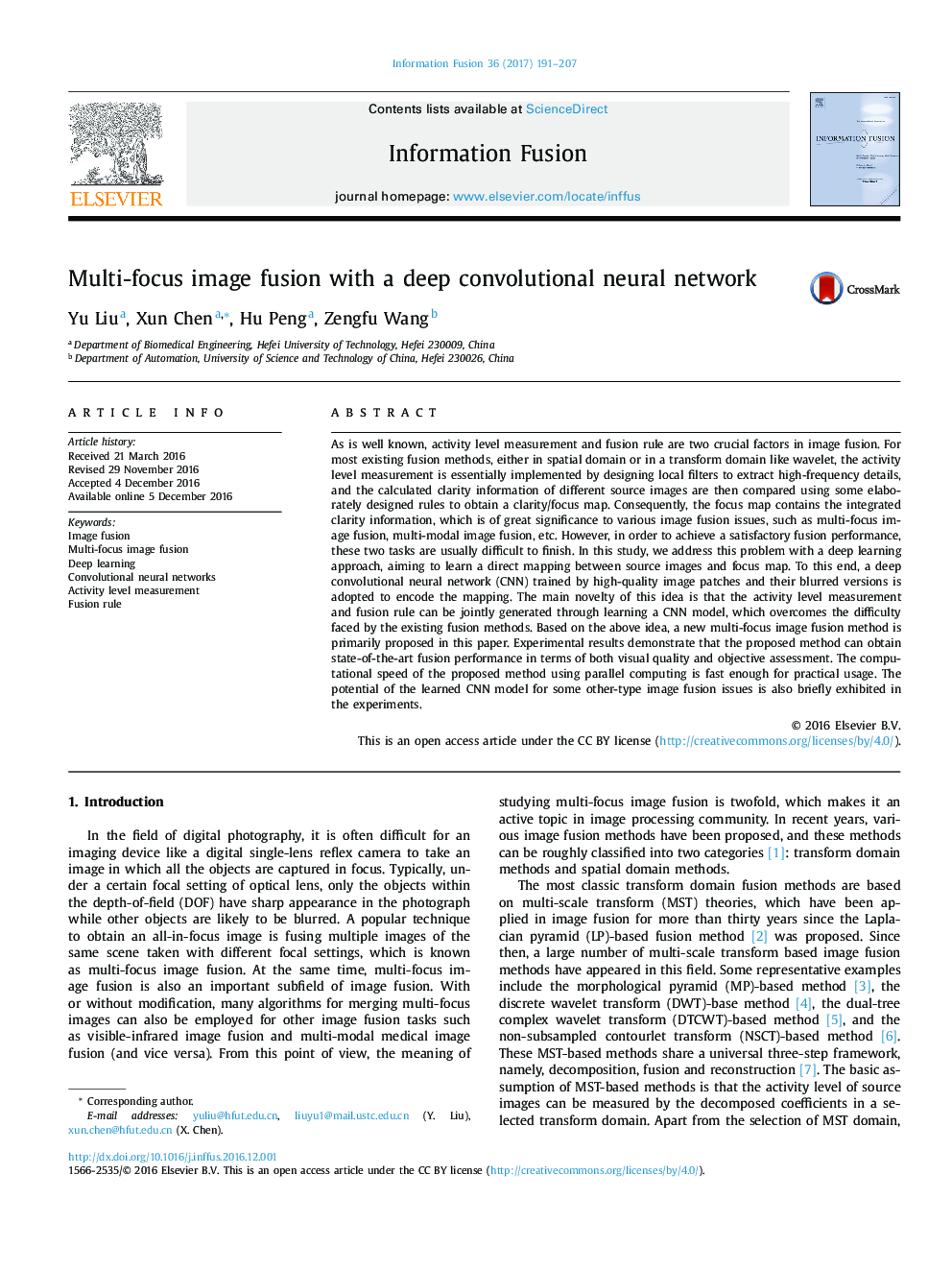| Article ID | Journal | Published Year | Pages | File Type |
|---|---|---|---|---|
| 4969147 | Information Fusion | 2017 | 17 Pages |
â¢Introduces Convolutional neural networks (CNNs) into the field of image fusion.â¢Discusses the feasibility and superiority of CNNs used for image fusion.â¢Proposes a state-of-the-art CNN-based multi-focus image fusion method.â¢Exhibits the potential of CNNs for other-type image fusion issues.â¢Puts forward some suggestions on the future study of CNN-based image fusion.
As is well known, activity level measurement and fusion rule are two crucial factors in image fusion. For most existing fusion methods, either in spatial domain or in a transform domain like wavelet, the activity level measurement is essentially implemented by designing local filters to extract high-frequency details, and the calculated clarity information of different source images are then compared using some elaborately designed rules to obtain a clarity/focus map. Consequently, the focus map contains the integrated clarity information, which is of great significance to various image fusion issues, such as multi-focus image fusion, multi-modal image fusion, etc. However, in order to achieve a satisfactory fusion performance, these two tasks are usually difficult to finish. In this study, we address this problem with a deep learning approach, aiming to learn a direct mapping between source images and focus map. To this end, a deep convolutional neural network (CNN) trained by high-quality image patches and their blurred versions is adopted to encode the mapping. The main novelty of this idea is that the activity level measurement and fusion rule can be jointly generated through learning a CNN model, which overcomes the difficulty faced by the existing fusion methods. Based on the above idea, a new multi-focus image fusion method is primarily proposed in this paper. Experimental results demonstrate that the proposed method can obtain state-of-the-art fusion performance in terms of both visual quality and objective assessment. The computational speed of the proposed method using parallel computing is fast enough for practical usage. The potential of the learned CNN model for some other-type image fusion issues is also briefly exhibited in the experiments.
